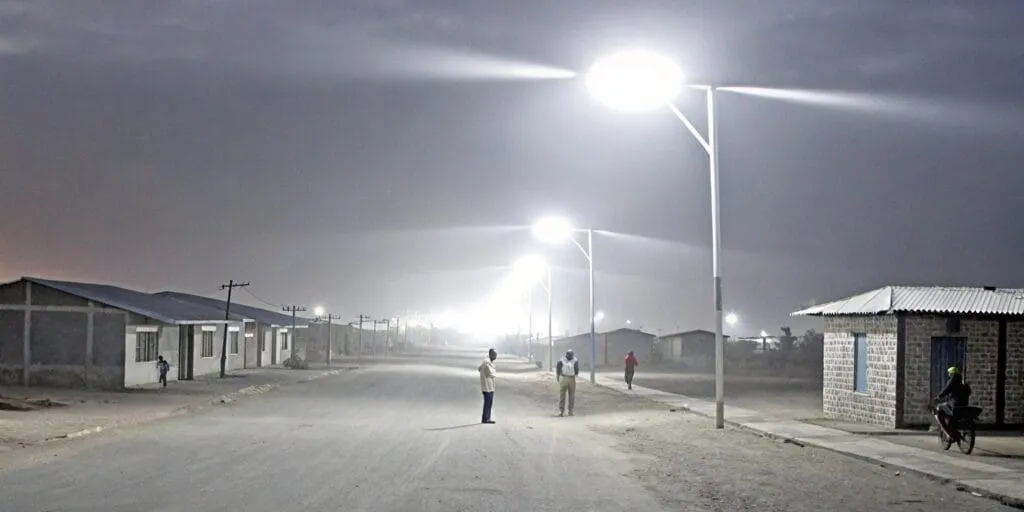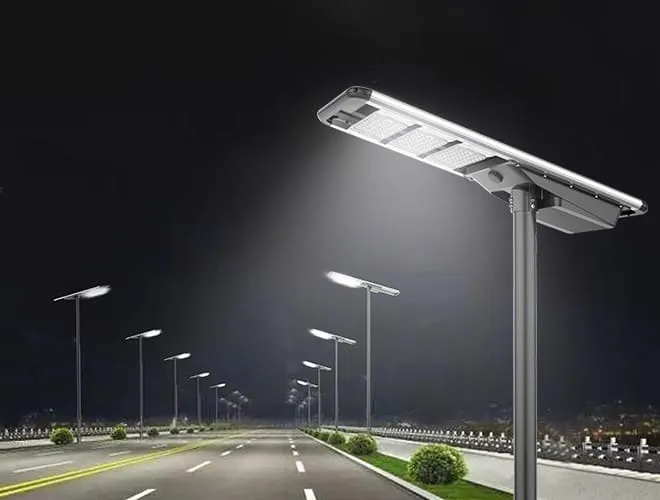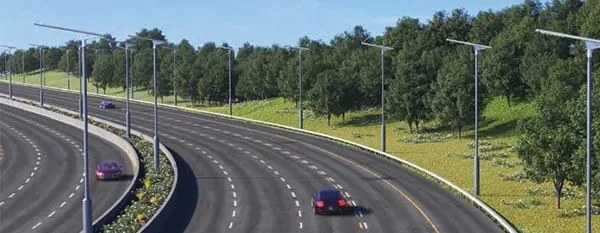Rural areas often struggle with inadequate infrastructure, leaving residents in darkness after sunset.
Solar street lights provide a sustainable, cost-effective solution, transforming rural life by improving safety, fostering economic growth, and enhancing overall well-being.
Despite rapid urban development, rural communities often lag in infrastructure, particularly in reliable lighting. Solar-powered street lights are revolutionizing these areas, offering a stable, eco-friendly, and long-lasting lighting solution.
Reliable Lighting Solutions
Unstable or nonexistent electricity access limits nighttime activities in rural areas.
Solar street lights operate independently of the grid, providing consistent illumination for streets, schools, and public spaces.
Why Solar Street Lights Are Ideal for Rural Areas
Many rural communities suffer from unreliable power or complete lack of grid connectivity. This severely restricts nighttime mobility, business operations, and social activities. Solar-powered street lights offer a practical and efficient solution.
| Feature | Benefit |
|---|---|
| Off-grid operation | Functions independently, ideal for remote locations. |
| Low maintenance | LED lights have long lifespans, reducing costs. |
| Easy installation | No complex wiring, making deployment fast and simple. |
Governments and NGOs increasingly recognize the potential of solar street lighting to address infrastructure gaps. By investing in these solutions, they can significantly enhance rural life.
Enhancing Safety and Social Stability
Proper lighting reduces accidents and crime rates, making rural communities safer.
Solar street lights illuminate roads, marketplaces, and schools, minimizing dark spots and boosting residents' confidence.
The Impact of Solar Lighting on Crime and Safety
Darkness creates opportunities for crime and increases the risk of accidents. Well-lit public areas discourage criminal activity and enable safer movement at night.
- Crime Reduction: Reports from multiple rural areas indicate lower theft and assault rates after solar lighting installations.
- Road Safety: Pedestrians and drivers navigate more securely, reducing nighttime accidents.
- Emergency Response: Well-lit streets aid quicker medical and security responses.
Rural communities that have adopted solar street lighting have witnessed tangible improvements in security, proving that lighting is more than just a convenience—it’s a necessity.
Boosting Rural Economic Growth
Nighttime illumination extends business hours and facilitates economic interactions.
From marketplaces to small industries, solar street lights empower rural economies.
How Solar Lighting Drives Economic Activity
In many rural areas, businesses close early due to lack of lighting, limiting economic opportunities. By installing solar street lights, communities can unlock economic potential.
- Extended Business Hours: Shops, food stalls, and markets remain open longer, increasing sales.
- Stronger Community Engagement: More public events and social interactions boost local commerce.
- Improved Agricultural Productivity: Farmers can process crops at night, ensuring better quality and output.
Governments and rural development agencies should prioritize lighting projects to enhance economic resilience in underserved regions.
Supporting Sustainable Development
Solar energy is clean, reducing reliance on fossil fuels and cutting carbon emissions.
Solar street lights integrate well with other eco-friendly initiatives, promoting green development.
Environmental Benefits of Solar Street Lights
Transitioning to solar lighting reduces environmental impact and contributes to global sustainability goals.
| Sustainability Aspect | Impact |
|---|---|
| 100% Renewable Energy | Reduces dependence on non-renewable power sources. |
| Lower Carbon Footprint | Cuts emissions from fossil fuel-based electricity generation. |
| Long-lasting Components | Minimizes waste and resource consumption. |
For example, India’s rural solar lighting initiative has prevented thousands of tons of CO₂ emissions annually while improving nighttime visibility for over 1,000 villages.
Empowering Communities and Enhancing Social Welfare
Lighting transforms community spaces, fostering social cohesion and improving education and healthcare.
Solar street lights enable night-time learning, better healthcare access, and stronger community interactions.
The Social Impact of Rural Lighting
- Education: Students can study after dark, improving academic performance.
- Healthcare: Clinics operate more efficiently at night, enhancing emergency response.
- Community Cohesion: Public areas become vibrant gathering spaces, strengthening social bonds.
Solar lighting is not just about visibility—it’s about uplifting communities and creating opportunities for progress.
Conclusion
Solar street lights are a game-changer for rural development.
They enhance safety, stimulate economic growth, and promote sustainability, making them an essential investment for brighter, more prosperous communities.
Governments and development organizations must champion solar street lighting projects to ensure equitable progress. By embracing this technology, rural communities can thrive, breaking free from the limitations of darkness.







